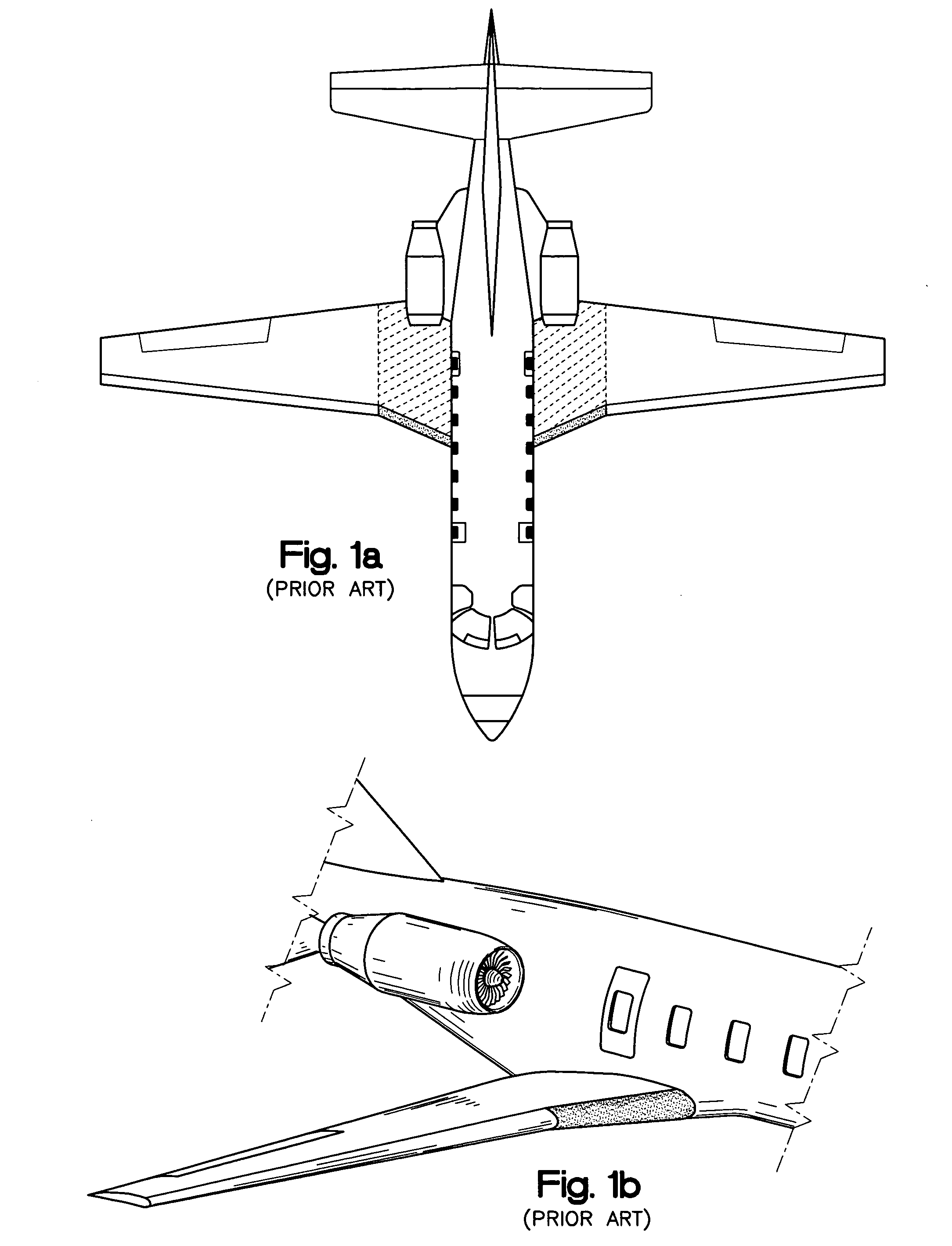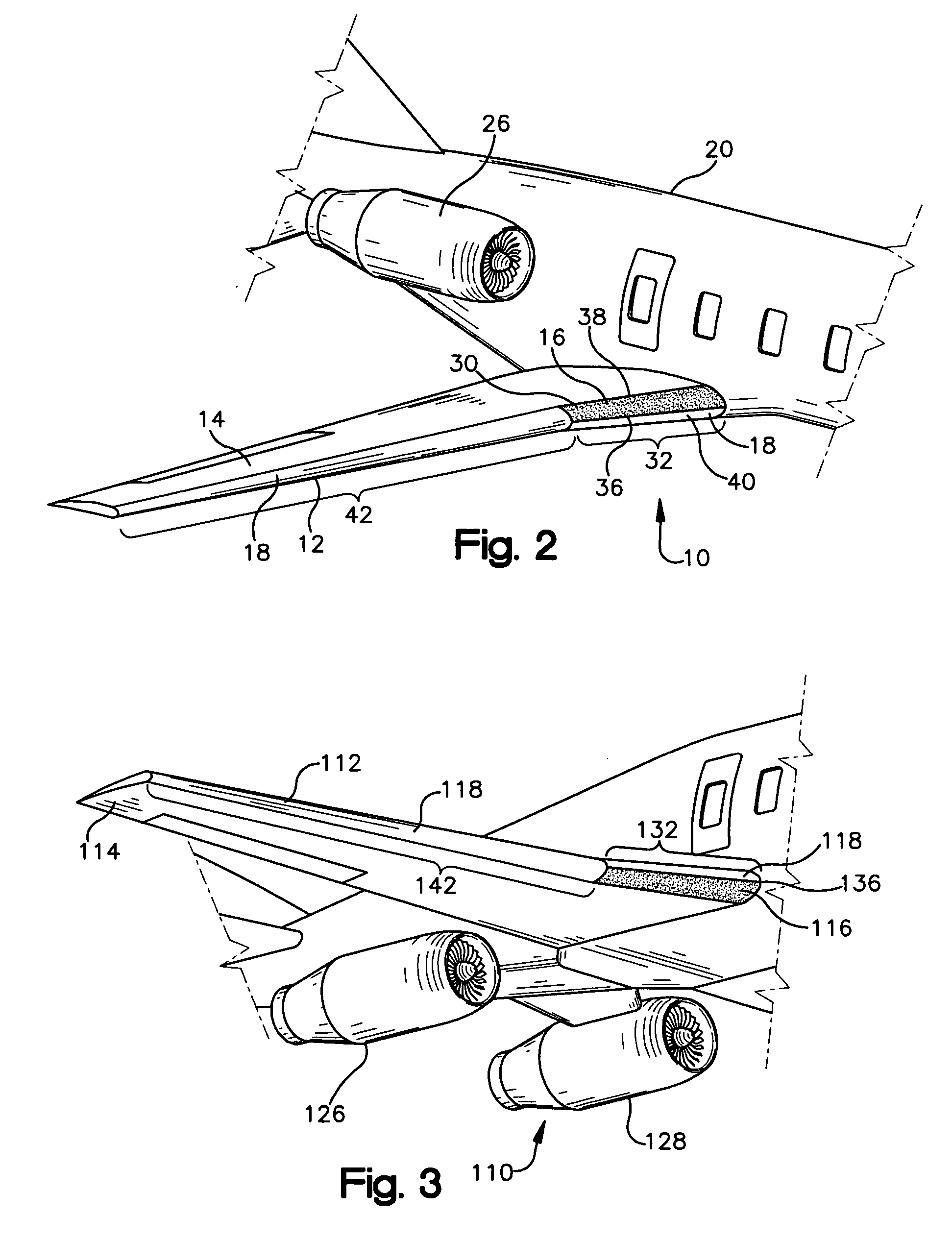Ice protection system for aircraft
a technology for aircraft wings and ice protection, which is applied in the direction of automatic actuation, transportation and packaging, and spars/stringers, etc. it can solve the problems of reducing the lift force generated by the wing, increasing drag, and severe ice formation on the wings of aircra
- Summary
- Abstract
- Description
- Claims
- Application Information
AI Technical Summary
Benefits of technology
Problems solved by technology
Method used
Image
Examples
Embodiment Construction
[0015] Referring to the drawings, specifically FIGS. 2 and 4, a preferred ice protection system 10 according to the present invention is illustrated. The ice protection system 10 is employed on the leading edge 12 of an aircraft wing 14 and includes an anti-ice subsystem 16 and a de-ice subsystem 18 configured in a manner to minimize energy consumption while preventing the hazard of ice chunks contacting the aircraft's engines.
[0016] As used within the specification and claims, the term “leading edge” refers to the forward portion of an aircraft wing upon which ice typically forms absent the presence of an anti-ice or de-ice system and such formation is critically detrimental to the aerodynamic function of the wing.
[0017] Referring to FIG. 4, the aircraft of the present invention includes a fuselage 20 that defines a longitudinal center axis “C” and first and second transverse wings 14 and 24 that extend outwardly from the fuselage 20. The aircraft also includes first and second e...
PUM
 Login to View More
Login to View More Abstract
Description
Claims
Application Information
 Login to View More
Login to View More - R&D
- Intellectual Property
- Life Sciences
- Materials
- Tech Scout
- Unparalleled Data Quality
- Higher Quality Content
- 60% Fewer Hallucinations
Browse by: Latest US Patents, China's latest patents, Technical Efficacy Thesaurus, Application Domain, Technology Topic, Popular Technical Reports.
© 2025 PatSnap. All rights reserved.Legal|Privacy policy|Modern Slavery Act Transparency Statement|Sitemap|About US| Contact US: help@patsnap.com



